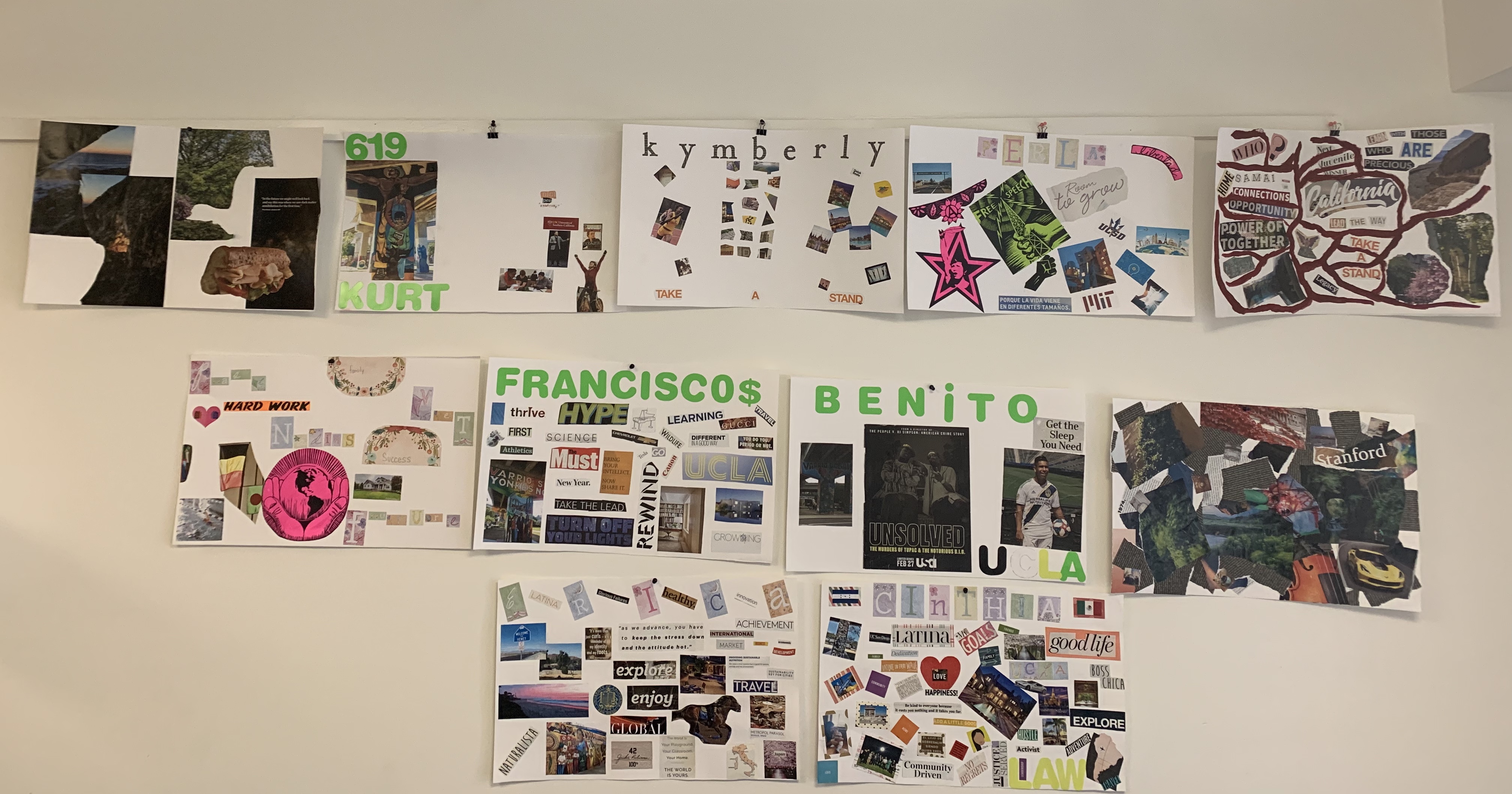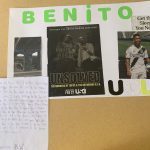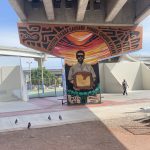After discussing possible group project ideas, we concluded that the best option was to create a workshop in which ninth grade students at Barrio Logan College Institute (BLCI) could design their own vision board. We choose to have them create a vision board because it allowed them to incorporate the photograph that they took during a prior workshop where they went to Chicano Park. It encouraged them to think about where they come from and where they want to go as they continue on their path to higher education. We wanted them to use the vision board as a way to freely express who they are and who they want to be in the future, as well as display what makes them unique. Our goal was to create a project that would empower students to showcase their passions and aspirations, while allowing us to interact with them and get to know more about them.
In order to move forward with this project, we first created a list of supplies needed to carry out this project. This list was comprised of magazines, brochures, poster boards, and other craft items. We began our quest for these items at the local Raza Centro located at the student services building at UC San Diego. The Raza Centro provided us with a number of magazines for our group project. Next, we ventured off to Pacific Beach in search of more magazines and crafting supplies for these vision boards. We explored various thrift and book stores where we only found a limited amount of craft items, however we struggled to find any magazines. A bookstore owner advised us to check out the Mission Valley Library which is where we headed to next. Luckily, the library provided us with a wide variety of very affordable magazines to choose from. Our final stop was at the ninety nine cent store where we purchased the most important piece of this project, the poster boards. That concluded our search for supplies.
Prior to the workshop, we decided to create our own vision boards to display as examples. Through this process we were able to learn more about ourselves and each other which was helpful because it allowed us to have a clearer view of what to expect from the project. The day of the workshop we discussed our plan with the high school specialist and they were able to provide us with supplies such as scissors, glue, and college brochures. We created an introduction that would provide the students with instructions on the requirements for the vision boards. One of the requirements was to showcase where they come from by including a photo of a mural at Chicano Park. The other requirement was to demonstrate where they see themselves in the future. The purpose of these requirements were to allow the students to respond to one of the UC insight questions in an artistic form, while also allowing them to express their individuality. Going into this workshop, we did not expect so many of the students to have previously created a vision board. However, we were surprised at how receptive and engaged they were throughout the workshop.
As soon as we passed out the supplies, we observed that students were quickly able to discuss their ideas with fellow peers. This was exciting to us because it showed that they were intrigued by the concept of creating a vision board. Throughout the workshop, we were able to walk around and converse with different groups of students. As a result of these conversations we learned about the unique interests and goals of individual students. For example, one of the students’s incorporated a picture of an avocado to show his extreme appreciation for avocados. Another student cut out a picture of a soccer player and when we asked him who that player was he opened up about how he considers him an inspiration. Several students were able to incorporate their own forms of art into their vision boards. An example of this was a student who decided to highlight one of his own drawings at the center of his vision board. Another student utilized different words and phrases from the magazines as the background of her vision board. Students exhibited the colleges they hope to attend in the future, which allowed us to learn more about why they wanted to attend that college. Two of the students were interested in colleges that were unfamiliar to us, however when we asked them why they selected those colleges they explained to us that it was because both colleges provided them with the best programs for their interests in technology and data science. Through the vision boards we were able to see the different career paths that students want to pursue. The choices were not just limited to traditional careers, they ranged from psychologists to professional baseball players. Other students demonstrated their interests in social justice and environmental science. For example, one of the students utilized the artwork of an accomplished artist/activist to display her interest in social justice. While another student utilized the National Geographic magazines to illustrate his passion for the environment. Overall, this project served as a way for us to understand the world the ninth grade students at Barrio Logan College Institute (BLCI) come from and how this influences where they want to go in the future.
In conclusion, leading a workshop at BLCI was an eye opening experience that allowed us to view the students through a different lens. The vision boards allowed us to interact with the students on a more personal level. Through these interactions the students were able to discuss their interests with us. This allowed us to make connections with the students that we could not have made otherwise. It also gave us the opportunity to provide students with our own experiences as first generation college students who just like them came from underserved communities. We were able to also provide them with the knowledge we have gained throughout our own journeys into the world of higher education. As a result of these vision boards both the students and us were able to learn from one another while emphasizing the importance of expressing what makes us unique as well as serving as a reminder to never forget where we come from and where we want to go.

June 4, 2019




